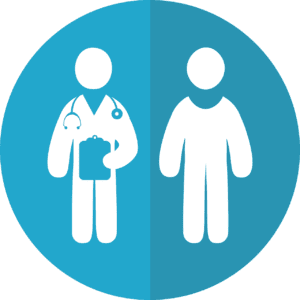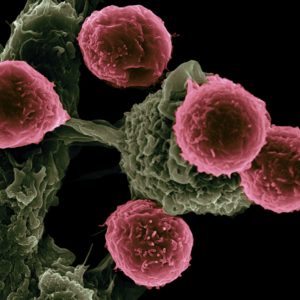Non-Hodgkin’s Lymphoma
What is non-Hodgkin’s lymphoma?
Non-Hodgkin’s lymphoma is a cancer that originates in the lymphatic system. A form of white blood cells called lymphocytes develop into tumors. It is the more common form of lymphoma, and there are multiple types of non-Hodgkin’s.
What are the symptoms of non-Hodgkin’s lymphoma?
Common symptoms of this cancer are swollen lymph nodes in the armpits, neck, or groin, pain and swelling in the abdomen, chest pain, coughing, issues with breathing, fever, fatigue, night sweats, and unexplained weight loss.
What causes non-Hodgkin’s lymphoma?
A weak immune system often plays a role in this cancer, although doctors are unsure of the exact cause. Those affected by non-Hodgkin’s produce too many lymphocytes, which then develop into tumors. T-cells and B-cells can both turn into tumors.
There are risk factors that may heighten one’s chance of developing this form of cancer. If one takes medications that suppress the immune system, catches certain infections or viruses, interacts with certain chemicals, or is in their older age they may be at a higher likelihood of non-Hodgkin’s lymphoma.
How is non-Hodgkin’s lymphoma diagnosed?
Doctors will ask about medical and family history if they suspect this cancer. They will follow with multiple tests, including physical exams, blood and urine tests, imaging tests, lymph node tests, and bone marrow tests. They may conduct further testing in order to find which stage of cancer one has.
What are the treatments for non-Hodgkin’s lymphoma?
Not everyone affected by non-Hodgkin’s lymphoma requires treatment. Those with indolent cancer do not need any form of treatment. Doctors will closely monitor the progression if one is in this situation.
If one does require treatment, they may use chemotherapy, radiation therapy, biological therapy drugs, or bone marrow transplants. Clinical trials are conducted often for this cancer as well.
Where can I find out more about non-Hodgkin’s lymphoma?
Non-Hodgkin's Lymphoma Articles

“The Aftermath: Nobody Told Me This Part Would Hurt Too: – Megan’s Fight Against Non-Hodgkin’s Lymphoma

ICYMI: LP-284 Earns Orphan Drug Designation for High-Grade B-Cell Lymphoma with MYC/BCL2 Rearrangements

Enterome Announces Positive Preliminary Trial Data for Non-Hodgkin Lymphoma

CB-010 Shows Promise for B-Cell Non-Hodgkin Lymphoma, Study Shows

Enterome Announces a Positive Profile for Indolent Non-Hodgkin Lymphoma


White Sox Pitcher Liam Hendriks Returns to Field After Conquering Non-Hodgkin’s Lymphoma (NHL)





